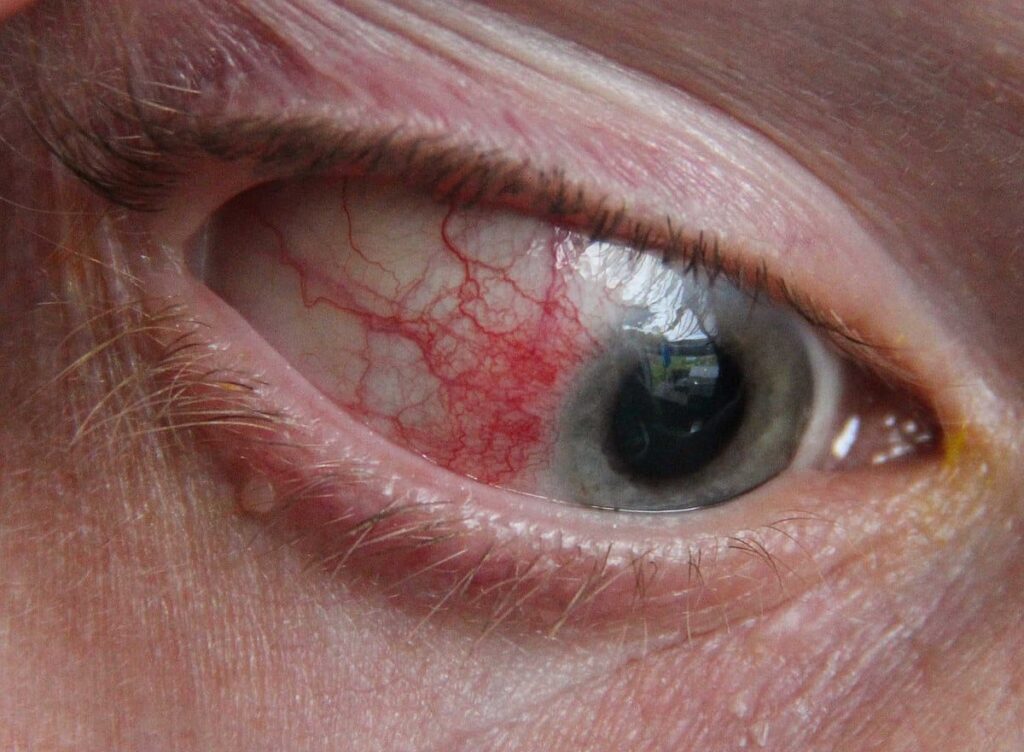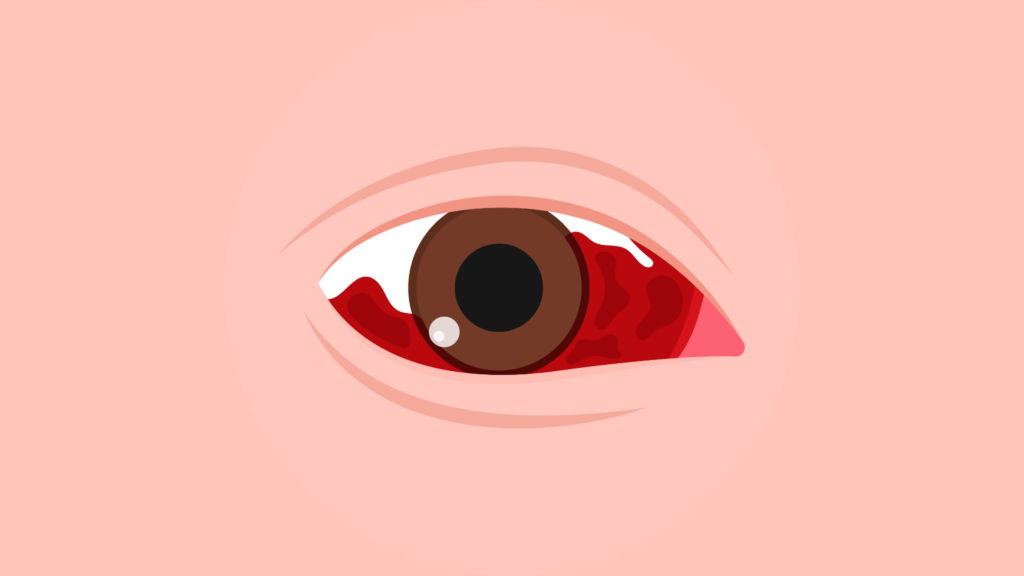Episcleritis
What are the symptoms?
The main symptom of episcleritis is redness in usually one or occasionally both eyes. There are two types of episcleritis, and they look slightly different from each other: Simple. Redness in a section and sometimes throughout the eye with minimal discomfort.
Nodular. Slightly raised bumps surrounded by dilated blood vessels, usually in one area of the eye, that may cause discomfort.
While simple and nodular episcleritis look slightly different, they share many of the same symptoms, including:
- tearing
- sensitivity to bright light
- a hot, prickly, or gritty sensation in the eye
These symptoms usually don’t affect your vision. They may also go away on their own after a few weeks and return several months later

What causes episcleritis?
The exact cause of episcleritis is unknown. However, it tends to occur more often in people with inflammatory diseases, such as:
- rheumatoid arthritis
- lupus
- Crohn’s disease
How is it diagnosed?
To diagnose episcleritis, your eye doctor will give you a thorough eye exam. They’ll likely start by looking at the color of your eyes. If the discoloration is more of a bluish purple, rather than red, they might diagnose you with scleritis instead.
You’ll also be given a slip lamp exam. This involves using a device called a slit lamp, which gives your doctor a 3D-view of the front of your eyes. Your doctor might apply eye drops before a slit lamp exam to make any abnormalities easier to see.
How is it treated?
Episcleritis often goes away on its own. If the appearance bothers you, or it keeps coming back, you can talk to your doctor about different treatment options.
These include:
- corticosteroid eye drops
- artificial tear eye drops
- nonsteroidal anti-inflammatory drugs, such as ibuprofen (Advil, Motrin)
Treating an underlying inflammatory condition

Scleritis
What are the symptoms of scleritis?
Each type of scleritis has similar symptoms, and they can worsen if the condition isn’t treated. Severe eye pain that responds poorly to painkillers is the main symptom of scleritis. Eye movements are likely to make the pain worse. The pain may spread throughout the entire face, particularly on the side of the affected eye.
Other symptoms may include:
- excessive tearing, or lacrimation
- decreased vision
- blurry vision
- sensitivity to light, or photophobia
- redness of the sclera, or white portion of your eye
The symptoms of posterior scleritis are not as evident because it does not cause the severe pain as other types.

Symptoms include:
- deep-seated headaches
- pain caused by eye movement
- eye irritation
- double vision
Some people experience little to no pain from scleritis. This may be because they have:
A milder casescleromalacia perforans, which is a rare complication of advanced rheumatoid arthritis (RA). A history of using immunosuppressive medications (they prevent activity in the immune system) before symptoms began.
What causes scleritis?
There are theories that the immune system’s T cells cause scleritis. The immune system is a network of organs, tissues, and circulating cells that work together to stop bacteria and viruses from causing illness. T cells work to destroy incoming pathogens, which are organisms that can cause disease or illness. In scleritis, they’re believed to begin attacking the eye’s own scleral cells. Doctors still aren’t sure why this happens.
What are the risk factors for scleritis?
Scleritis may occur at any age. Women are more likely to develop it than men. There’s no specific race or area of the world where this condition is more common.
You have an increased chance of developing scleritis if you have:
- Wegener’s disease (Wegener’s granulomatosis), which is an uncommon disorder that involves inflammation of the blood vessels
- rheumatoid arthritis (RA), which is an autoimmune disorder causing inflammation of the joints
- inflammatory bowel disease (IBD), which causes digestive symptoms due to inflammation of the bowel
- Sjogren’s syndrome, which is an immune disorder known for causing dry eyes and mouth
- lupus, an immune disorder that causes skin inflammation
- eye infections (may or may not be related to autoimmune disease)
- damage to eye tissues from an accident.

